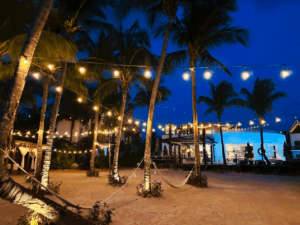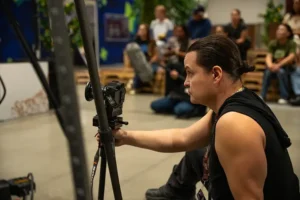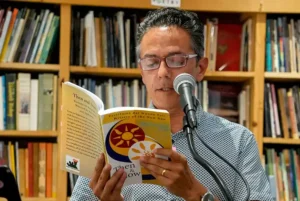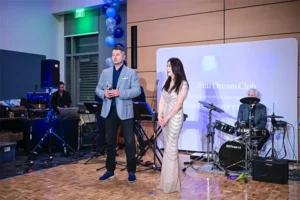
CAN UKRAINIAN REFUGEES COME TO THE U.S. AND HOW DOES ONE APPLY?
Kerosky-Gallelli-Immigration-Law
Why do we make it so hard for refugees fleeing violence in their homeland?
In the 1980’s our country permitted large numbers of refugees from countries of the former Soviet Union to immigrate here. Our nation also opened it’s doors to those fleeing the repressiveregimes in Vietnam, Cambodia and Laos. And Cubans were entitled to asylum as soon as they landed on U.S. soil.
Almost all of these refugees were provided legal status, a right to work and even limited government assistance; and later they could apply for permanent residence and U.S. citizenship.
So why has it been so hard for refugees fleeing Syria and Afghanistan to come here? Will the same fate await the refugees from the Ukraine – now numbering 3 million and growing?
Our Refugee Program and Procedure.
When a refugee applies for admission to the U.S. from abroad, they are governed by the U.S. refugee law and the limited numbers and long waits that apply.
Under the Immigration and Nationality Act (INA), foreign nationals qualify for status as a refugee if they can prove they have experienced past persecution or have a well-founded fear of persecution on account of race, religion, nationality, membership in a particular social group, or political opinion. This definition is based on the United Nations Convention on the Status of Refugees, to which the U.S. is a signatory. Congress passed the Refugee Act of 1980, which incorporatedthe Convention’s definition into U.S. law.
Persons applying for refugee status must be approved through the U.S. Refugee Admissions Program. First, applicants mustapply with the United Nations High Commissioner for Refugees (UNHCR) in the country to which they have fled. If UNHCR deems the applicants eligible and suitable for resettlement to the U.S., they will then undergo a lengthy vetting process by the U.S. Department of State in conjunction with the U.S. Department of Health and Human Services.
They are also subject to annual numerical limitations set by each administration. Usually, there are non-governmental organizations (NGOs) involved in assisting the refugee family with transition to life in the U.S. Refugee immigration to the U.S. takes a long time due to these annual numerical quotas and the limited resources of these NGOs.
Numerical Limits on Refugee Acceptance.
Historically, the U.S. offered refuge to more people than all the other countries of the world combined. That changed recently.
Donald Trump slashed the annual quota of refugees from110,000 per year under Barack Obama to an all-time low of 18,000. Moreover, due to budget cuts and extreme vetting implemented by the Trump Administration, far fewer refugees were actually admitted – only 11,814 in 2020. Moreover, under the so-called “Muslim Ban”, refugees from countries like Syria were banned altogether.
Shortly after taking office, President Biden raised the refugee quota to 65,000. Earlier in March of 2022, the United States announced plans to welcome up to 100,000 Ukrainians and others fleeing Russia’s aggression through the full range of legal pathways, including the U.S. Refugee Admissions Program.
Some good news for Ukrainians: relief from COVID bar and Temporary Protected Status.
The Biden Administration also announced an exception to the continuing Title 42 policy restricting asylum applications at the Southern border due to COVID. Ukrainians seeking asylum at the Mexican border will not be automatically turned away, butwill be considered on a case-to-case basis.
The Administration also granted Temporary Protected Status to Ukrainian citizens already here. This means those already here can stay at least 18 months and obtain a work permit.
It remains to be seen whether our country’s refugee policies will be more generous in light of the flood of those fleeing Ukraine. Almost certainly, the road to a U.S. border will be a long one and far fewer refugees will be admitted by our country than most European nations. Poland has already admitted over 2 million through its borders for resettlement; Hungary, Moldova, Slovakia and Romania: about one million more. Germany, France, England, and almost all the EU countries have agreed to accept hundreds of thousands.
Give Us Your Tired, Huddled Masses, Yearning to Be Free.
“Send these, the homeless, tempest-tossed to me, I lift my lamp beside the golden door!” Those words of Emma Lazarus on the base of the Statue of Liberty have inspired generations of immigrants to seek refuge here.
It’s hard to imagine clearer images of “tired, huddled masses yearning to be free” then those of the refugees fleeing Ukraine – as well as those from Syria, Afghanistan and Central Americabefore them.
It’s time the U.S. once again step forward and adopt more humane refugee policies worthy of its long immigrant tradition. The need has never been greater.

CHRISTOPHER A. KEROSKY
has practiced immigration law for over 25 years and is currently a Professor of Law at Empire College of Law. He is a former member of the Sonoma County Human Rights Commission.
WARNING: The foregoing is a summary generally discussing legal issues. It is not intended to be a substitute for legal advice.
1851 Heritage Ln, Ste 141, Sacramento, CA 95815
916-610-3223 by appointments only


















